Comparison For Google Ads Creatives
Every day, marketing teams face a crucial decision: Should they rely on Google’s built-in AI tools or invest in custom solutions for specific ad campaign tasks?
I’ve watched this debate play out countless times with clients.
Google continues adding more AI features for tasks like ad copy generation, headline creation, image generation, and product feed optimization.
Meanwhile, specialized tools and custom solutions are thriving, and no real breakthrough for Google AI can be seen.
Recent research supports this tension.
Gherheș et al. (2025) found that while AI-generated content can outperform human-created alternatives in certain contexts, the quality varies significantly depending on implementation and purpose.
Their study revealed that over 50% of users preferred AI-generated informative content over sensationalized approaches, suggesting that how AI is deployed matters more than the technology itself.
But which approach actually delivers better results? And at what cost?
As Pavlik (2024) notes in his analysis of AI in journalism, tools like ChatGPT don’t simply replace human creativity but rather present opportunities for “improving the quality and effectiveness” of creative work when properly integrated into existing workflows.
A recent study by Ameet Khabra compared the performance of human-written versus AI-generated ad copy in Google Ads campaigns.
Over an eight-week period with a $500 budget, human-crafted ads significantly outperformed AI-created content from Copy AI, achieving 60% more clicks, a 1.33% higher click-through rate, and a lower cost per click ($4.85 vs. $6.05).
Researchers attributed human copywriters’ superior performance to their ability to understand audience emotions, employ creativity and emotional appeal, adapt to specific contexts, and leverage cultural nuances that AI still struggles to replicate.
While acknowledging AI’s evolving capabilities and potential value as a supplementary tool, the study emphasizes the enduring importance of human creativity in crafting compelling advertising messages that drive engagement and conversions.
Regardless of these mixed research findings, one thing is certain: AI is increasingly embedded in creative processes across marketing, and its integration is inevitable.
The question isn’t whether AI will play a role in advertising creation, but rather how marketers can best leverage these tools to enhance their campaigns.
As AI capabilities evolve rapidly, today’s limitations may be tomorrow’s strengths. With this inevitability in mind, marketers need practical guidance on navigating the current landscape of available solutions.
This article compares Google Ads integrated AI tools against third-party and custom solutions for creative and optimization tasks specifically.
AI-Generated Ad Copy
Google AI Automatically Created Assets
Google’s AI text generator aims to streamline the ad creation process by converting basic product descriptions into campaign-ready assets.
The platform encourages advertisers to input unique selling propositions and key product features to generate contextually relevant ad copy.
Upon testing this tool with a simulated video game business specializing in refurbished PlayStation 5 consoles and games, the performance fell notably short of expectations.
The output quality was inconsistent, but more concerning were the significant compliance issues observed.
In one particularly problematic instance, the system generated the phrase “Welcome to the Amazon® Website” as suggested ad text, presenting a clear trademark infringement risk and potential legal exposure for advertisers.
Such critical errors highlight a fundamental limitation in Google’s native AI solution: While offering workflow convenience, it demonstrates inadequate safeguards for brand compliance and legal protection.
The system also produced contextually inappropriate messaging, such as “PlayStation 5 Problems Solved,” which misaligned with sales-oriented campaign objectives by suggesting repair services or technical support rather than product offerings.
Without careful human review, these problems make the tool risky to use, especially for businesses in competitive markets where mistaken identity or inaccurate representations could lead to serious legal issues and damage to your reputation.
When generating longer headlines, there were much fewer results.
Only three ad suggestions appeared, one of which included free shipping information for orders over $50, which was a hallucination, as this information was never disclosed in the prompt or the landing page.
 Image from author, April 2025
Image from author, April 2025Creating descriptions was even worse, as there was only one ad suggestion and not even a good one from a copywriting perspective.
 Image from author, April 2025
Image from author, April 2025After trying with different prompts, I was able to get at least five new descriptions out of Google AI.
Still, the results were quite disappointing. The ad copy contained hallucinations like the “free shipping over 100 USD,” as well as the business name “Example Video Games,” instead of using the business name of the account or extracting it from the landing page or URL.
Overall, underwhelming results, considering Google is one of the biggest companies on earth and owns the biggest online advertising platform.
 Image from author, April 2025
Image from author, April 2025Third-Party Ad Copy Creation
While Google’s AI text generator struggles with brand accuracy and contextual relevance, several general-purpose AI models offer more sophisticated ad copy creation capabilities that balance automation with quality control.
Leading general AI assistants like Claude, ChatGPT, and Gemini represent compelling alternatives for marketers seeking higher-quality ad copy generation.
Unlike Google’s more constrained system, these platforms offer greater flexibility in handling nuanced prompting and brand-specific requirements.
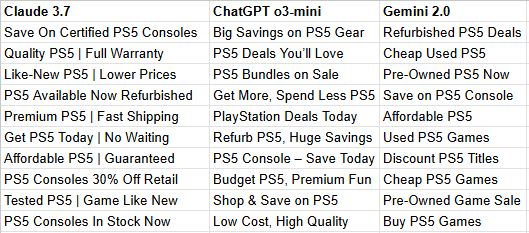 Image by author, April 2025
Image by author, April 2025In testing with our video game business scenario, we prompted each model to create headlines for refurbished PlayStation 5 consoles.
The results demonstrated significant advantages over Google’s native offering:
- Claude 3.7 produced premium-positioned headlines like “Save On Certified PS5 Consoles,” “Quality PS5 | Full Warranty,” and “Premium PS5 | Fast Shipping” that emphasize both value and quality assurance. Claude’s headlines maintained strong brand positioning while highlighting availability (“PS5 Consoles In Stock Now”) and price advantages (“PS5 Consoles 30% Off Retail”) without sacrificing perceived value.
- ChatGPT (o3-mini) focused more on emotional appeal and deal framing with options such as “PS5 Deals You’ll Love,” “Get More, Spend Less PS5,” and “Budget PS5, Premium Fun.” ChatGPT’s approach effectively balanced affordability messaging with aspirational elements, potentially appealing to both value-conscious and experience-focused consumers.
- Gemini 2.0 took a more direct value-oriented approach with straightforward headlines like “Refurbished PS5 Deals,” “Cheap Used PS5,” and “Discount PS5 Titles.” While less nuanced in positioning, Gemini’s headlines clearly communicate the core offering and may perform well for price-sensitive segments or direct response campaigns.
All three models demonstrated superior context awareness compared to Google’s native tool, with each showcasing different strategic approaches to headline creation.
They successfully avoided the hallucinations and brand confusion issues observed in Google’s Ad tool, while providing greater headline variety tailored to different marketing objectives.
The key advantage these general AI assistants offer is their adaptability and more refined understanding of marketing language.
By providing detailed prompting with brand guidelines, target audience information, and specific messaging requirements, marketers can achieve significantly better results than with Google’s more limited integrated tool.
For businesses where ad copy directly impacts conversion rates, leveraging these more sophisticated AI options can yield higher-quality creative assets that better represent brand positioning and speak more effectively to customer needs.
Despite Gemini’s relevant headline ideas, it struggled to adhere to the 30-character limit for some prompts on Google Ads headlines – a surprising limitation given that Gemini is Google’s own AI model and would be expected to understand Google Ads guidelines inherently – while Claude and ChatGPT consistently produced properly sized headlines without major additional editing or truncation.
Image Generation
Google AI Image Generation
Image generation is another area where AI can really shine and reduce the workload.
Images are a core asset in ecommerce, not only used for product images, but also for category pages, shop banners, display ads, and more.
For our virtual video game business, I tried to create some images matching our PlayStation 5 asset group. The results were interesting to say.
The first created image looks very similar to an Xbox. Specifically, an Xbox One S or an Xbox Series S, which is the latest model.
Now, there are no logos or trademarks seen, and the form factor is a little off.
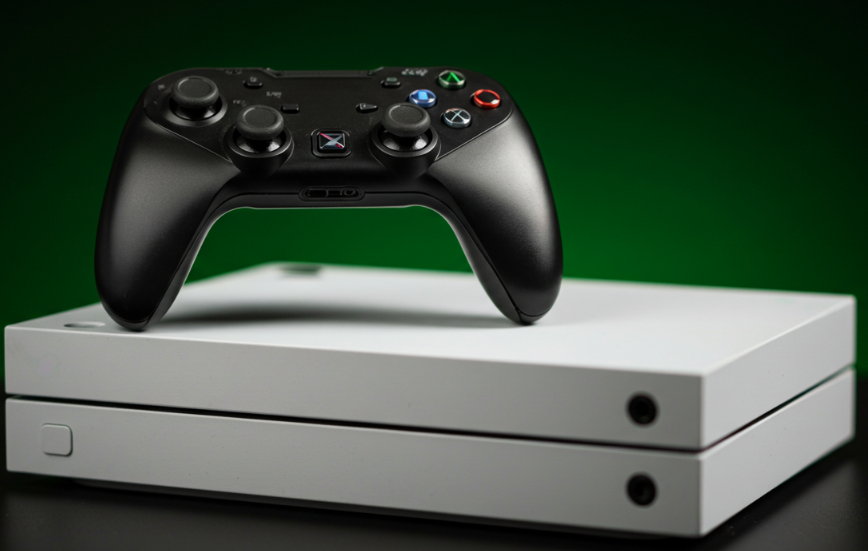 AI-generated image by author, April 2025
AI-generated image by author, April 2025Even more interesting, depending on the exact prompt, Google AI shows an error message related to branded items and content restrictions.
 Image from author, April 2025
Image from author, April 2025Another image created looks a little more like a PlayStation, but not as described and advertised as a PlayStation 5, but rather an older PlayStation 4 model.
Again, the content restrictions are most likely responsible for the results.
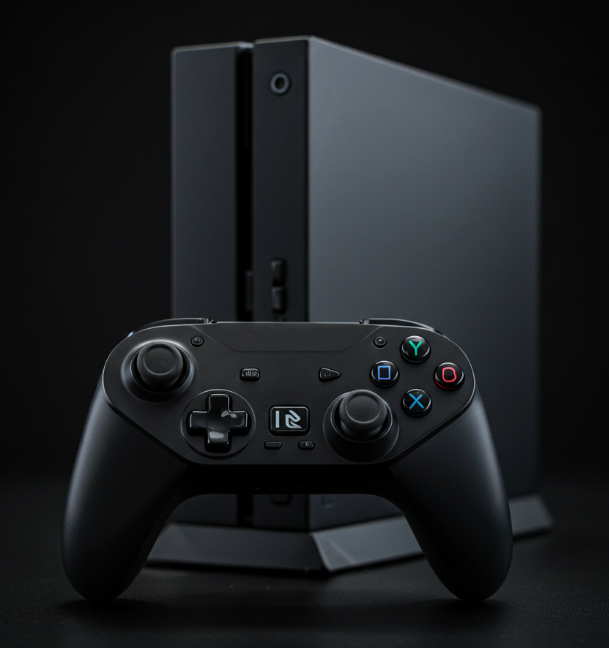 AI-generated image by author, April 2025
AI-generated image by author, April 2025While the image results are somewhat disappointing for those branded items, it is understandable that Google AI follows content restrictions and brand guidelines to avoid any legal issues, as the PlayStation is a trademark of Sony, and the Xbox is a trademark of Microsoft.
It’s interesting to see that Google AI tries to work around this limitation and still creates an image, but in that specific case, the image is more or less useless, as there is little value in showcasing a non-existent video game console.
A question here would be why the content restrictions and guidelines did not apply to text creation when the text asset “Welcome to the Amazon® Website” was created.
To check the image creation quality, I tried a different approach for non-branded items in the dog food category.
The image is good at first glance since multiple products are shown with a dog in the picture, supporting the category, but some things are off.
The text in the image is still a mess for Google AI. Plus, the proportions are wrong. The dog is way too small, considering the cans of dog food displayed, which are small items.
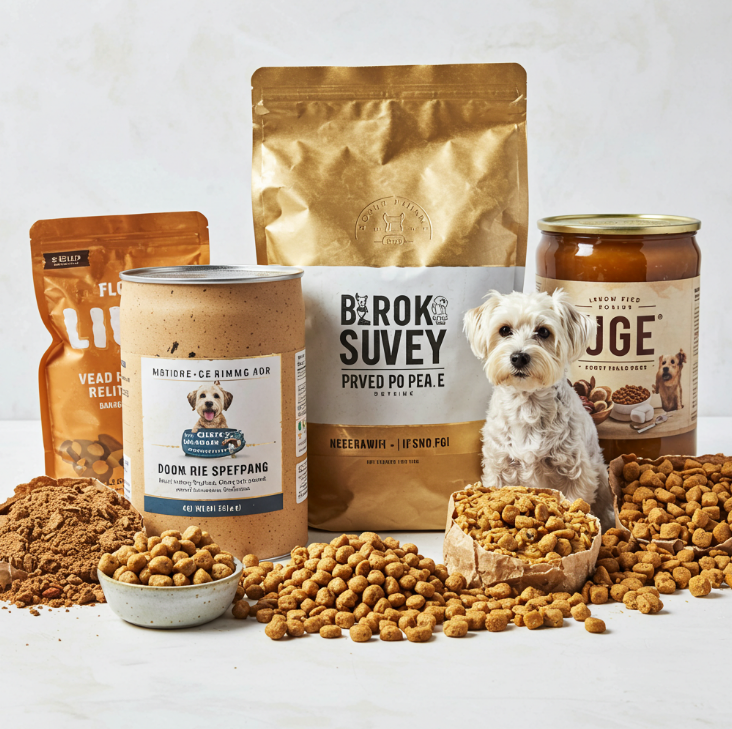 AI-generated image by author, April 2025
AI-generated image by author, April 2025Better than video game consoles, but still not good enough to rely solely on Google AI without any backup or alternative.
Third-Party Image Generation
ChatGPT
Using the same prompts to create images, ChatGPT delivers amazing results compared to the Google Ads integrated image creator.
Visually, it was able to recreate a PlayStation video game console with a gaming controller.
ChatGPT even got details right, except the brand logo, which might be due to some brand protection measures.
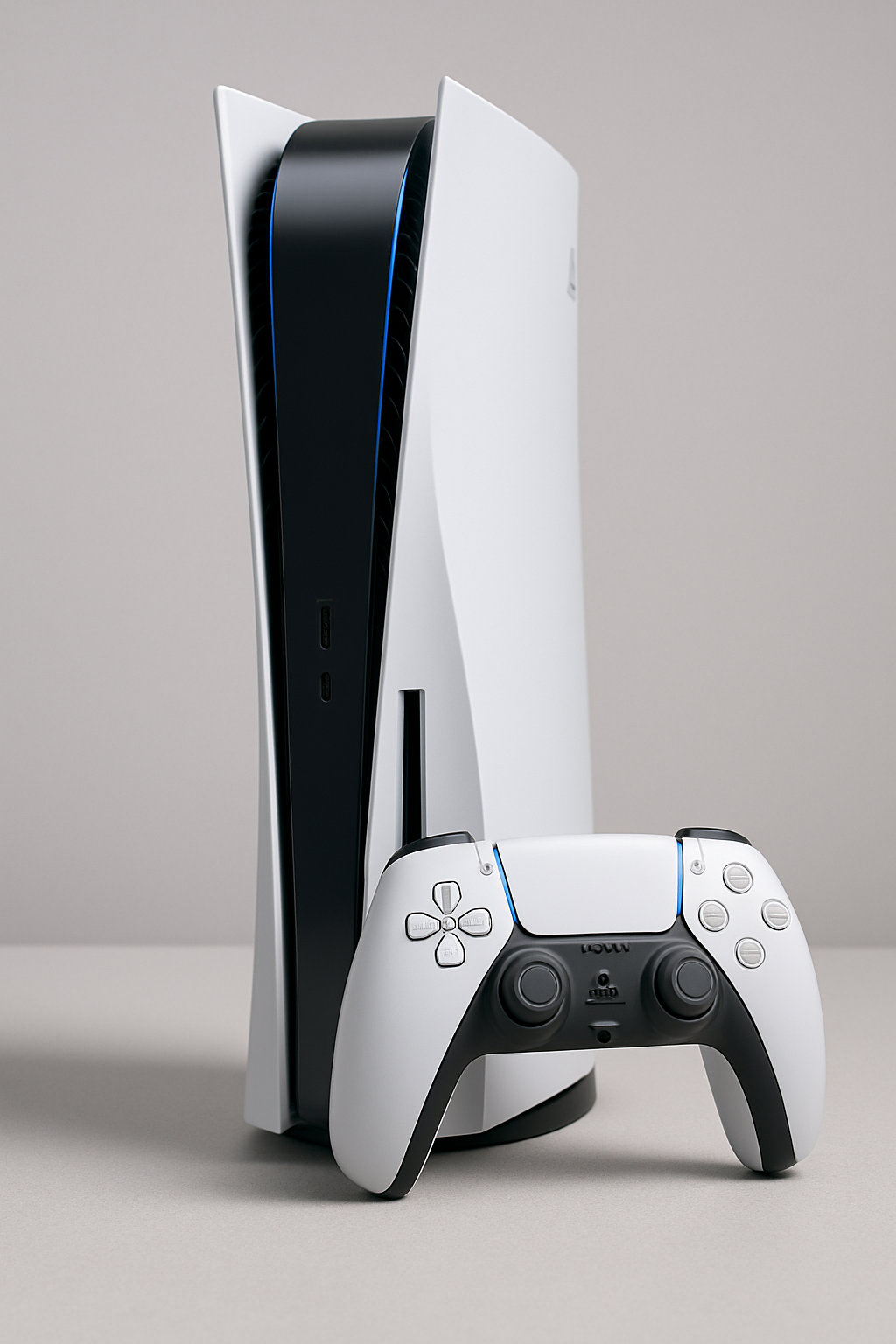 AI-generated image by author, April 2025
AI-generated image by author, April 2025Also, the latest Xbox model was created with in-depth details.
This time, even the Xbox logo was created, maybe because ChatGPT and Microsoft have made a trademark deal of some sort? Or trademark restrictions have some loopholes.
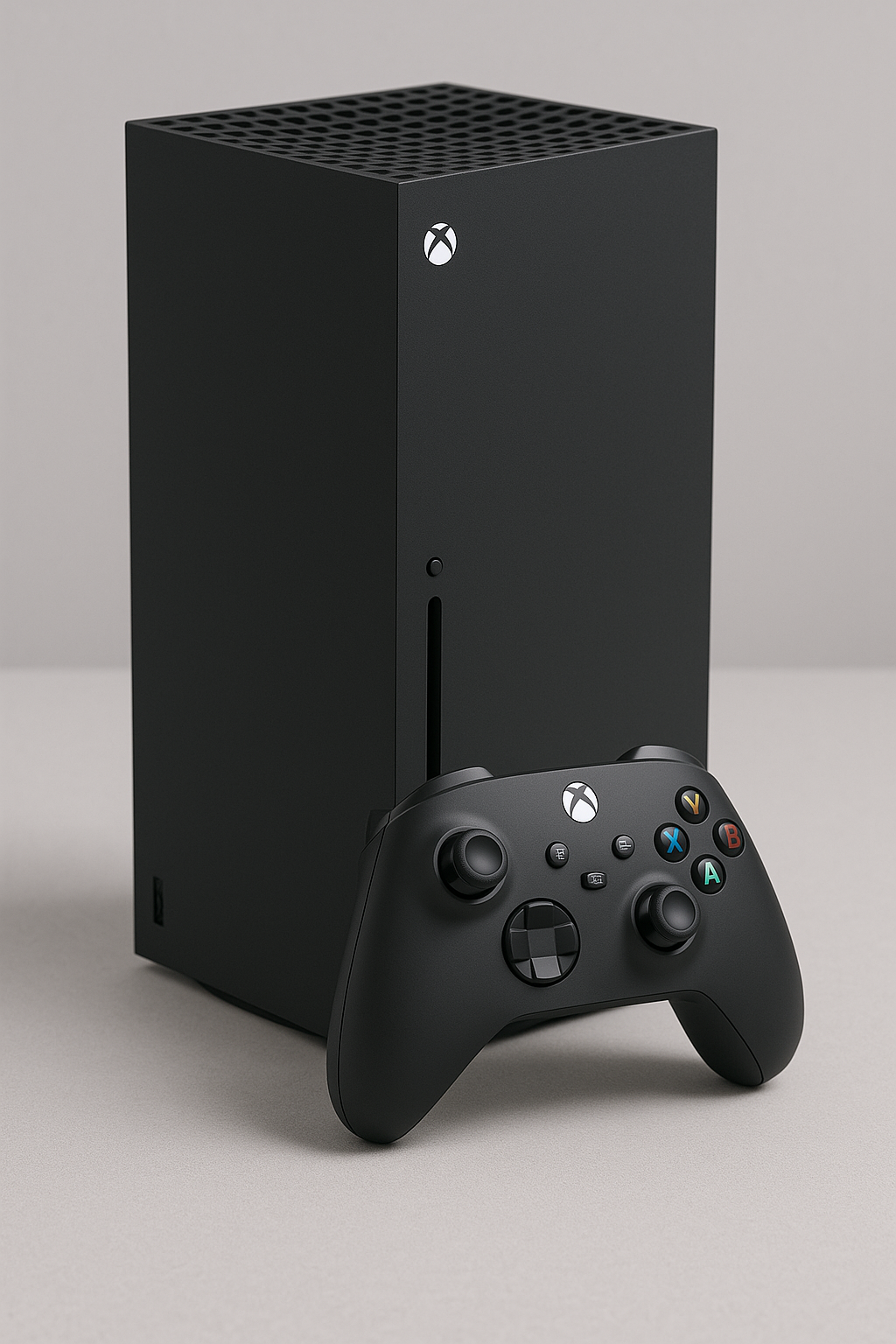 AI-generated image by author, April 2025
AI-generated image by author, April 2025At last, the creation of the dog food image was also a success.
The prompt included the brand to be named “Doug’s Best Dog Food,” which was perfectly written on the product, along with a nicely placed bowl full of pellets in front of a golden retriever.
In comparison, Google AI was able to create a decent image, but upon closer look, issues with displaying words were apparent, which ChatGPT could handle perfectly.
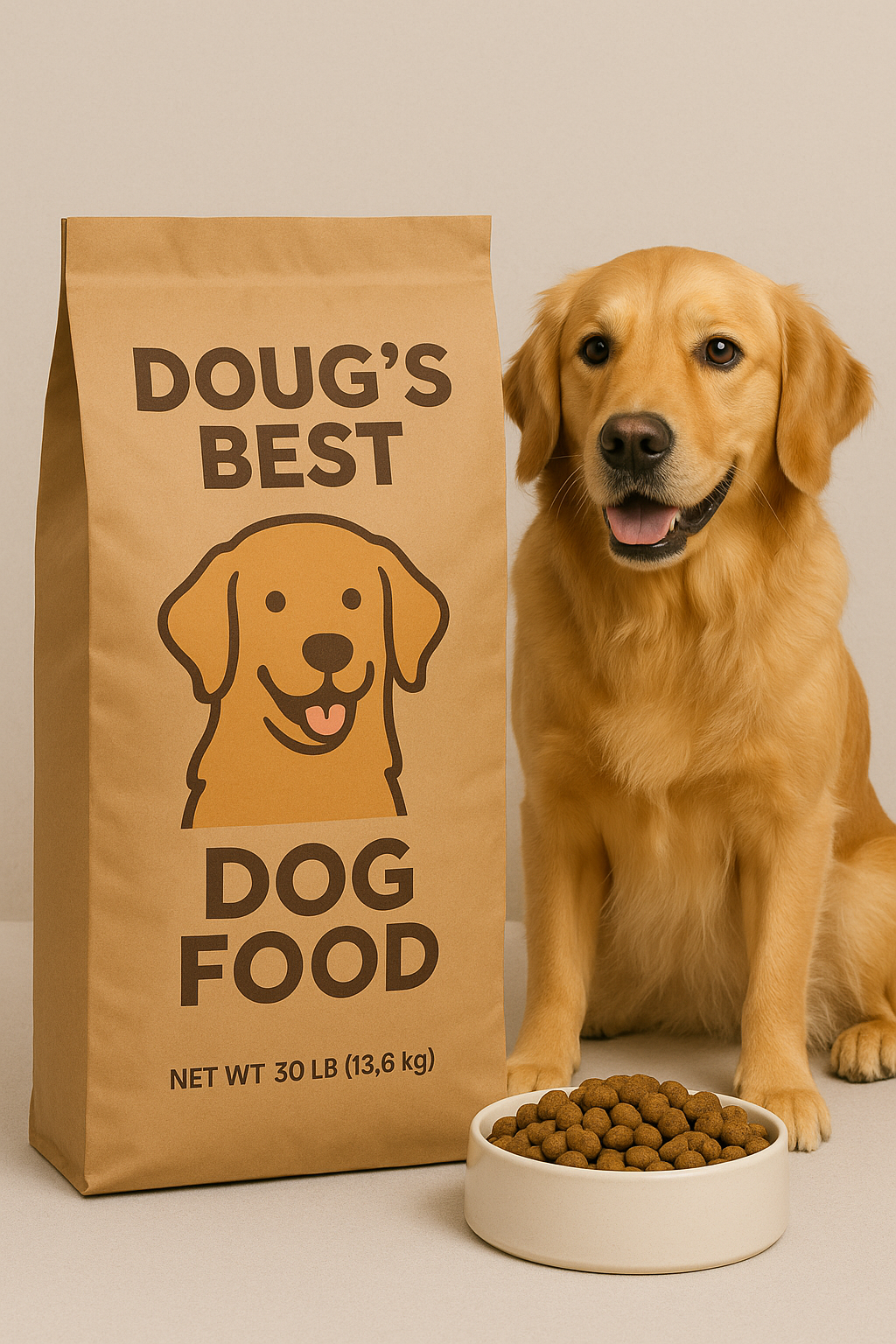 AI-generated image by author, April 2025
AI-generated image by author, April 2025Qwen
Qwen is an image generation tool based on Deepseek, which is a Chinese-based AI developer.
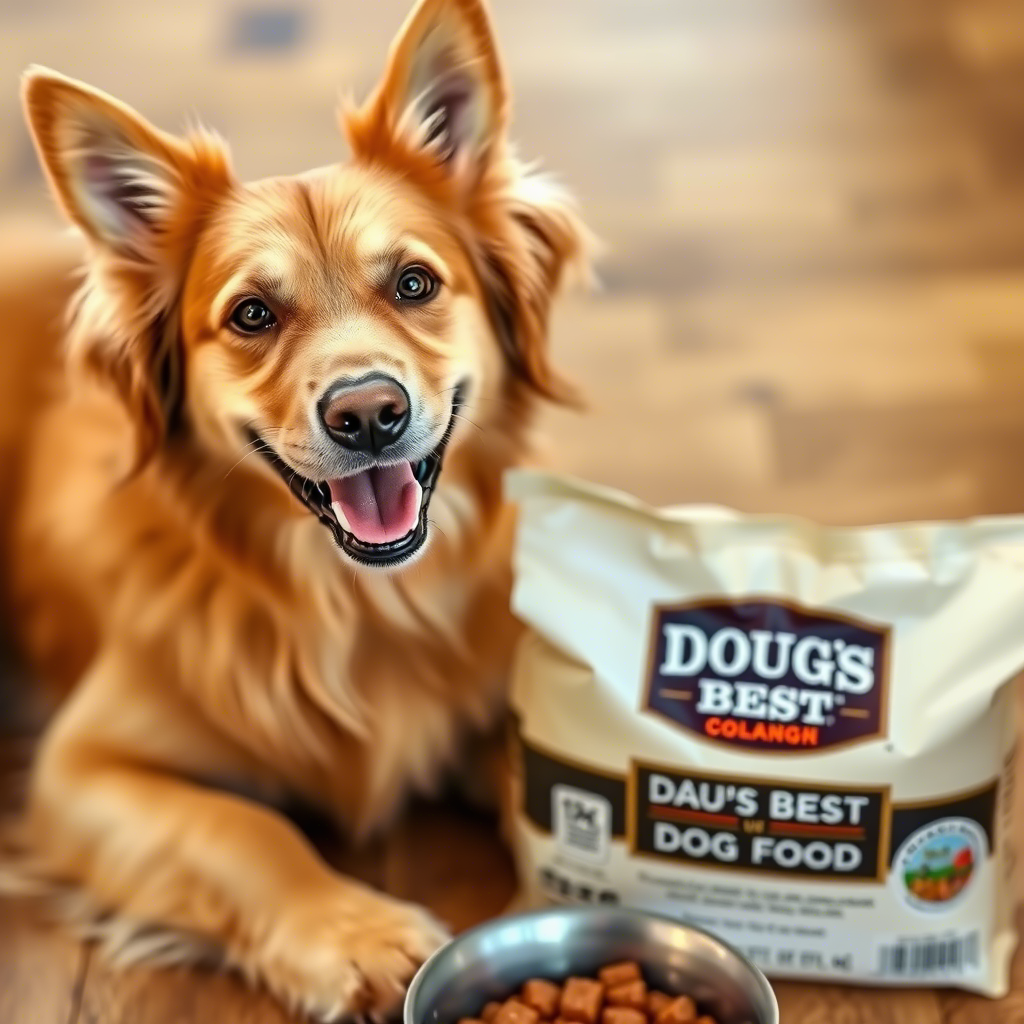 AI-generated image by author, April 2025
AI-generated image by author, April 2025The image from Qwen clearly had an “AI” look compared to the ChatGPT or Google AI image.
However, it got the brand name “Doug’s Best Dog Food” right. With some improvements, Qwen can produce decent images, if you are okay with having a digital image look.
Google AI was able to create a more real-life looking image, with the downside of not being able to display the brand name correctly.
Video Creation Tool
Google Ads Video Creation Tool
Google’s built-in video creation tool aims to make video advertising accessible to marketers without production resources.
The tool covers multiple marketing objectives – from brand awareness and consideration to direct sales and app promotion – accommodating various business categories, including apps, products, and services.
It offers flexibility with vertical, square, and horizontal formats in lengths ranging from quick six-second spots to 15-second and longer videos.
However, the tool’s output quality reveals its limitations.
Most videos are essentially slideshows, stitching together static images, logos, and text overlays rather than fluid video content.
While this approach democratizes video ad creation, the results often lack the polish and engagement power of properly produced video content.
For many marketers, this represents the fundamental tradeoff of Google’s native tools: accessibility and integration vs. creative limitations that might impact performance.
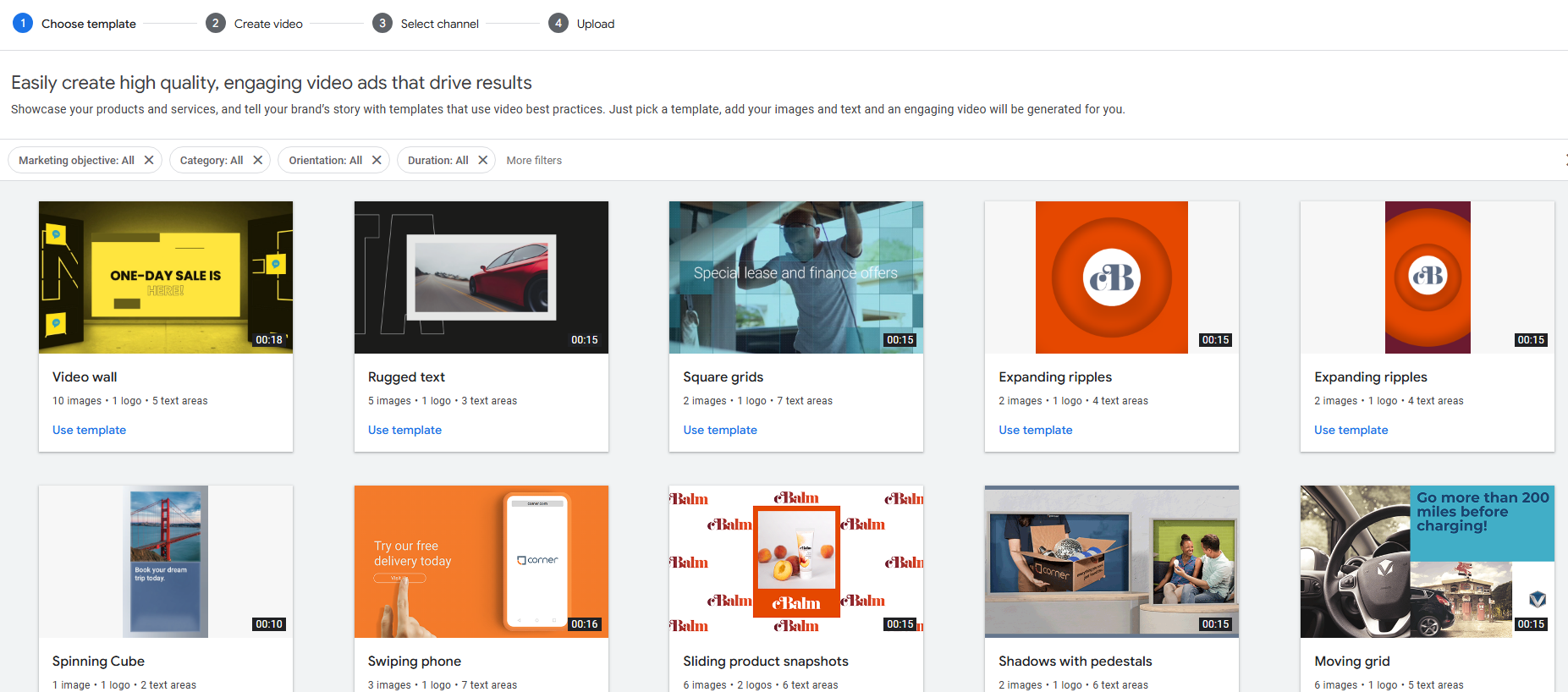 Image from author, April 2025
Image from author, April 2025At best, marketers get a nice-looking slideshow; speaking of a serious advertising video would be too much.
The better templates are mostly for app-related videos, where at least some kind of animation is included with a finger doing some phone touch gestures.
Overall, the native video creation tool serves as a backup for marketers who need a video immediately and don’t have any tools on hand.
In any other case, it’s best to postpone video creation and start with a more decent tool.
Third-Party Video Creation
Canva Video Creation
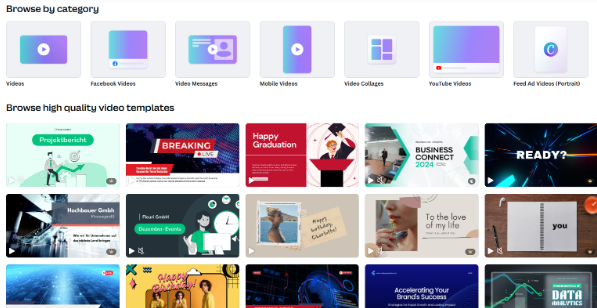 Screenshot from Canva, April 2025
Screenshot from Canva, April 2025Canva makes much better videos than Google Ads’ built-in tools with almost the same effort.
Google mostly creates basic slideshows, but Canva gives you thousands of professional templates, animations, and stock videos to use in your marketing.
The simple drag-and-drop design lets you make engaging videos with smooth transitions and text effects that keep viewers engaged.
Unlike Google’s static slideshows, Canva creates flowing video content that looks professionally made.
If you spend just a few more minutes using Canva instead of Google’s tool, your videos will look much more professional and likely perform better with your audience.
Qwen
Alibaba’s Qwen is a strong competitor to Google Ads’ basic video tools, giving marketers better videos without needing special skills.
While Google just makes simple slideshows, Qwen uses AI to turn your images and text into dynamic videos with smooth movements and professional transitions.
The tool is great at automatically creating cohesive visual stories even from minimal input, adding motion to still images in ways that look professional.
What stands out is how Qwen creates animations that actually match your product type and brand style, avoiding the one-size-fits-all look of Google’s templates.
Though not as well-known as Canva in the West, Qwen’s AI approach produces polished videos that look intentionally designed rather than template-made, making it a great choice for marketers who want better videos than what Google offers.
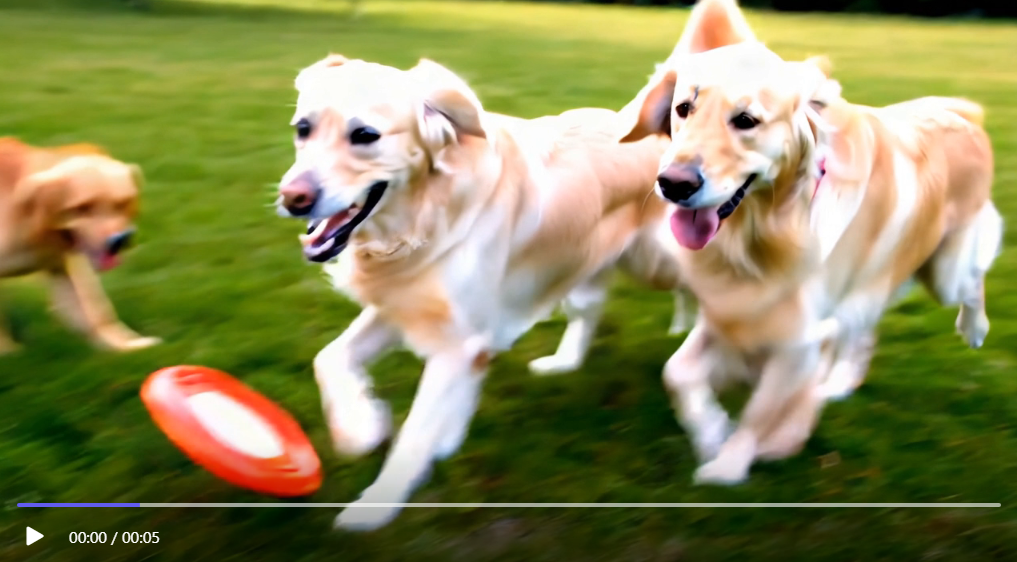 Image by author, April 2025
Image by author, April 2025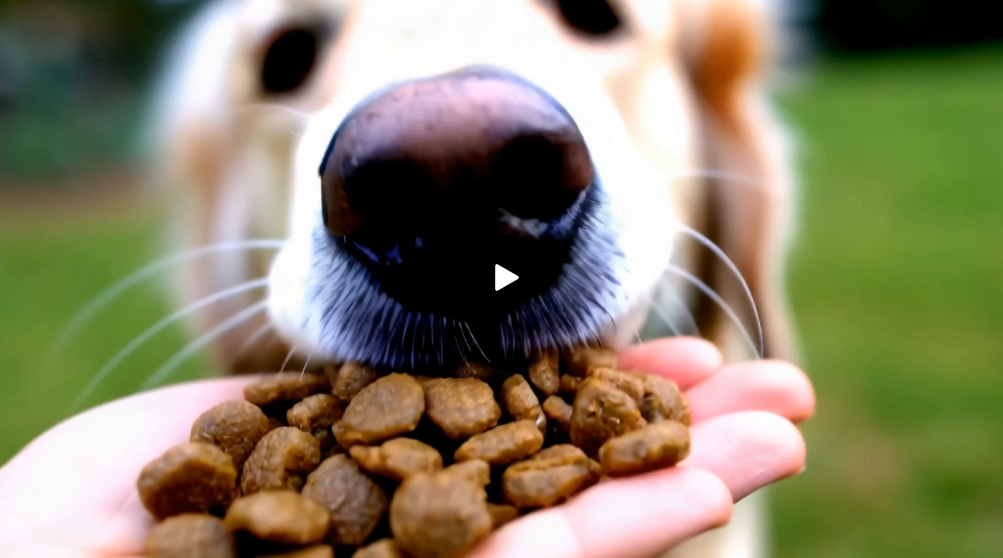 Image by author, April 2025
Image by author, April 2025For the example of a dog food brand, Qwen delivered exceptional results.
With the first prompt, Qwen created a five-second clip of golden retrievers playing around and going to a human hand to eat dog food from the hand.
Not only did the video look pretty close to real life compared to the Qwen image generation “AI look,” but Qwen also did this as a free tool. No cost involved.
If you compare this to the Google video creation, which is basically a PowerPoint presentation, Qwen makes a really good performance.
Sora
Another great video tool is Sora from OpenAI.
Since Sora is included in the $20 Premium membership, you can generate videos at almost no cost, though with some limitations on video quality and length.
Still, there are a few tools out there that can generate decent AI video output for that cost.
Product Image Improvements
Product Studio
The Product Studio for Merchant Center Next is a beta image optimization tool within the Merchant Center, also accessible via the Google App within Shopify.
It allows for creating product images in various scenes, as well as removing backgrounds and increasing image quality.
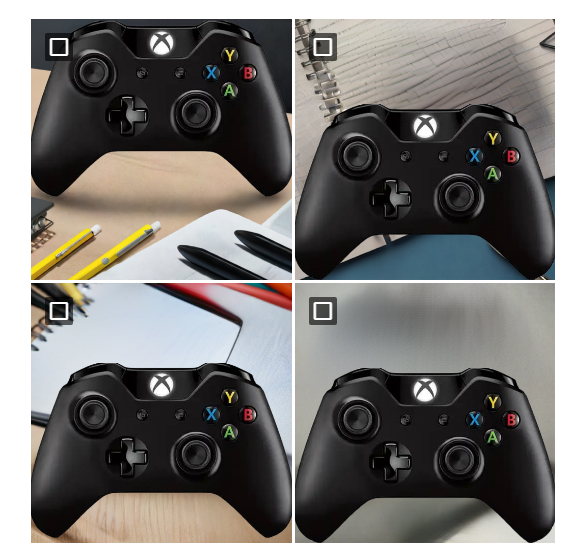 Image from author, April 2025
Image from author, April 2025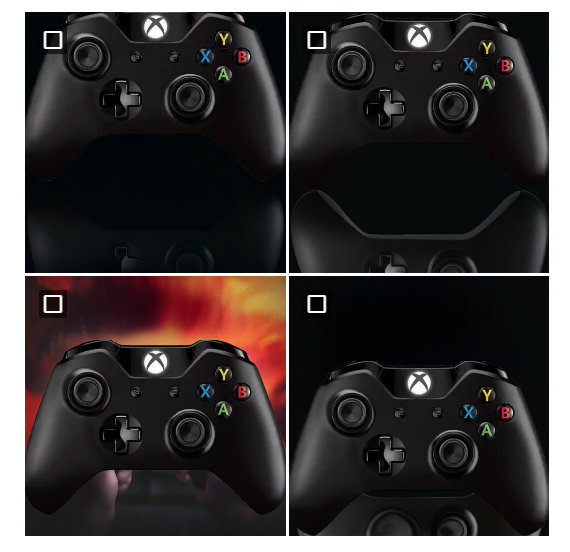 Image from author, April 2025
Image from author, April 2025These are two tries to display a gaming controller in a scene.
Although the quality of the product image has remained reasonably good, the scenes are barely usable.
The image processing prompt was “Showcase this controller in a living room, in front of a TV with neon lighting.”
In practice, the desired scene was not even remotely depicted. The controller in front of notebooks or pens is out of place; the second attempt resulted in three black backgrounds and a fiery background.
Free Alternatives To Google’s Product Studio
Unlike Google’s Product Studio, which struggles with accurate scene generation as shown in the gaming controller example, several free tools offer more reliable image optimization capabilities.
Canva’s free tier includes a background removal tool that produces clean cutouts with remarkable accuracy.
While scene creation is more limited in the free version, you can still place products on various pre-designed backgrounds or use their extensive template library to create more contextually appropriate product displays than what you experienced with Google’s tool.
To remove backgrounds, use remove.bg, which is a specialized tool that focuses exclusively on background removal with impressive results, even for complex products like your gaming controller.
The free version has size limitations but delivers professional-quality cutouts that can then be placed into scenes using other tools.
For everything more complex, GIMP is a free and capable tool. This open-source image editor provides robust capabilities for both background removal and scene composition.
Though it has a steeper learning curve, GIMP offers precise control over image quality enhancement and realistic product placement.
Final Thoughts
Google’s native AI tools, while conveniently integrated into their advertising platform, consistently underperform compared to third-party alternatives.
The evidence is clear and concerning. Google’s AI ad copy generator produced legally problematic content with brand infringement risks and hallucinated product details.
Its image generation produced visually inaccurate representations. The video creation tool delivered little more than basic slideshows rather than engaging video content.
Meanwhile, third-party solutions or Google’s own Gemini model used externally demonstrated superior capabilities across all creative functions:
- General-purpose AI assistants like Claude and ChatGPT produced more compelling, accurate, and compliant ad copy.
- Specialized tools like Canva, Remove.bg, and Photopea offered vastly superior image manipulation options.
- Video creation platforms like Canva and Qwen delivered professional-quality animation and transitions impossible with Google’s basic tools.
This performance gap reveals the fundamental tradeoff marketers face: convenience of integration vs. creative quality and performance.
Google’s in-platform AI tools provide workflow efficiency but at the significant cost of creative limitations, brand safety concerns, and potential legal exposure.
For marketers serious about campaign performance, the path forward is clear: Leverage external AI solutions for creative development, then import these higher-quality assets into Google’s advertising platform.
This hybrid approach maintains the advantage of Google’s targeting and delivery mechanisms while avoiding the substantial limitations of their creative AI tools.
As AI continues to evolve in marketing, successful advertisers will be those who strategically select the right tools for each specific function rather than defaulting to in-platform options for convenience alone.
The evidence suggests that, for now, the marketing advantage lies decidedly with those willing to look beyond Google’s native AI for their creative development needs.
More Resources:
Featured Image: KinoMasterskaya/Shutterstock




